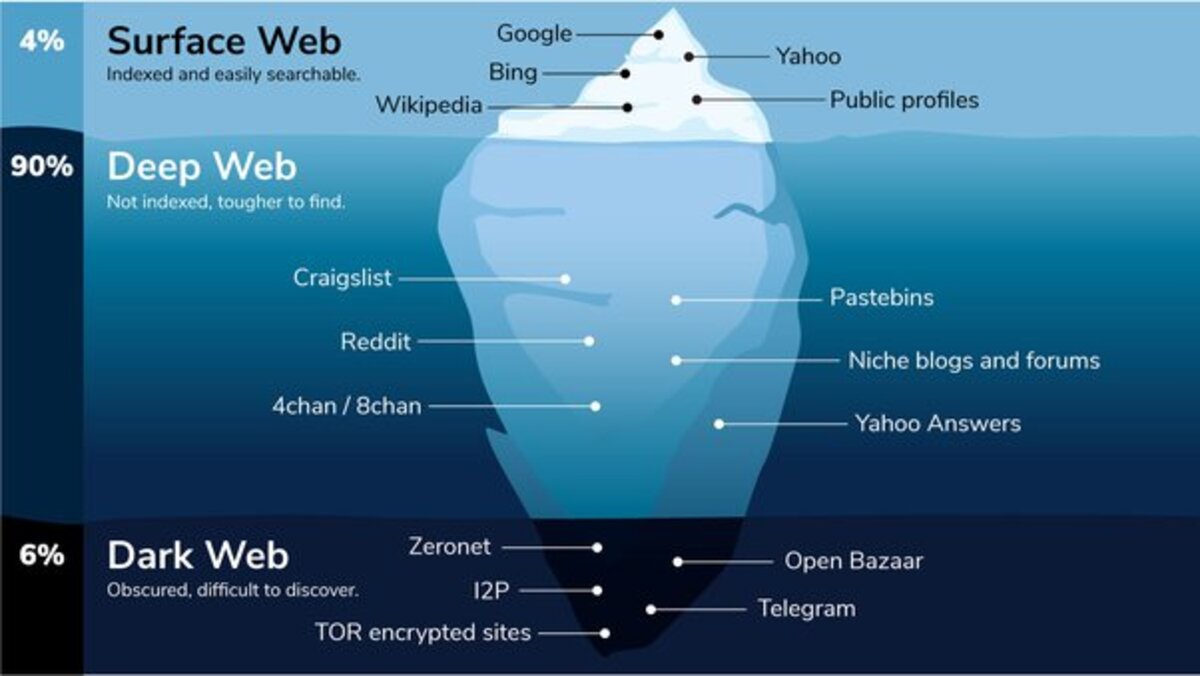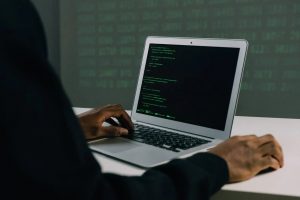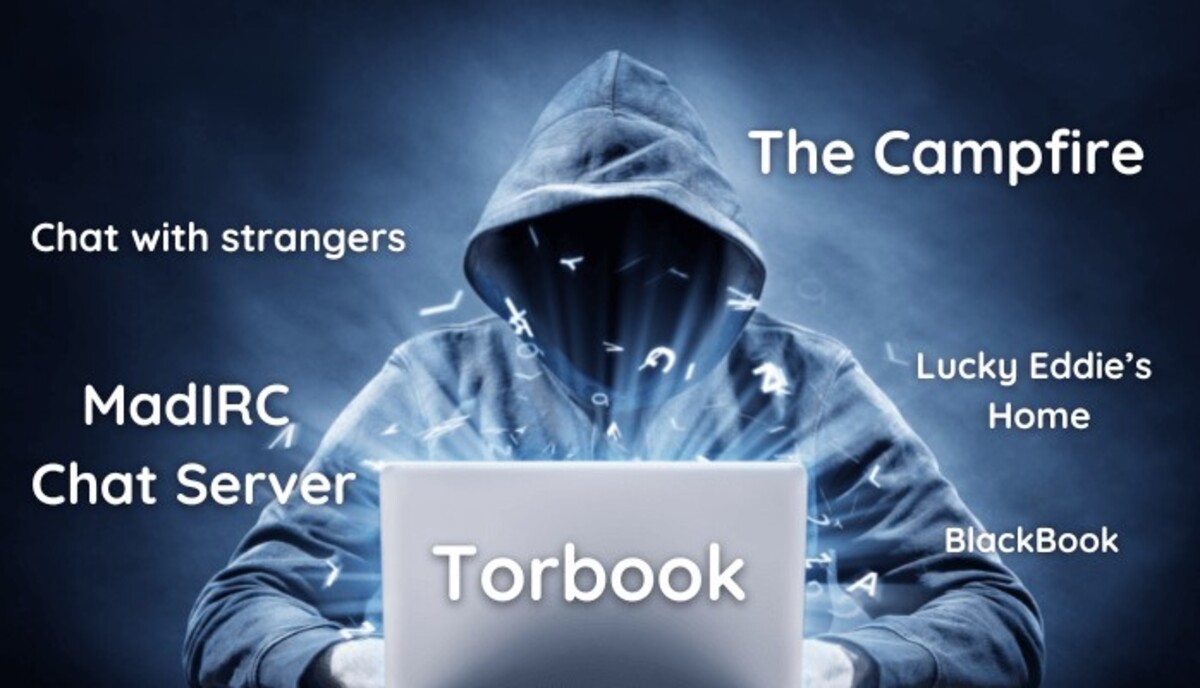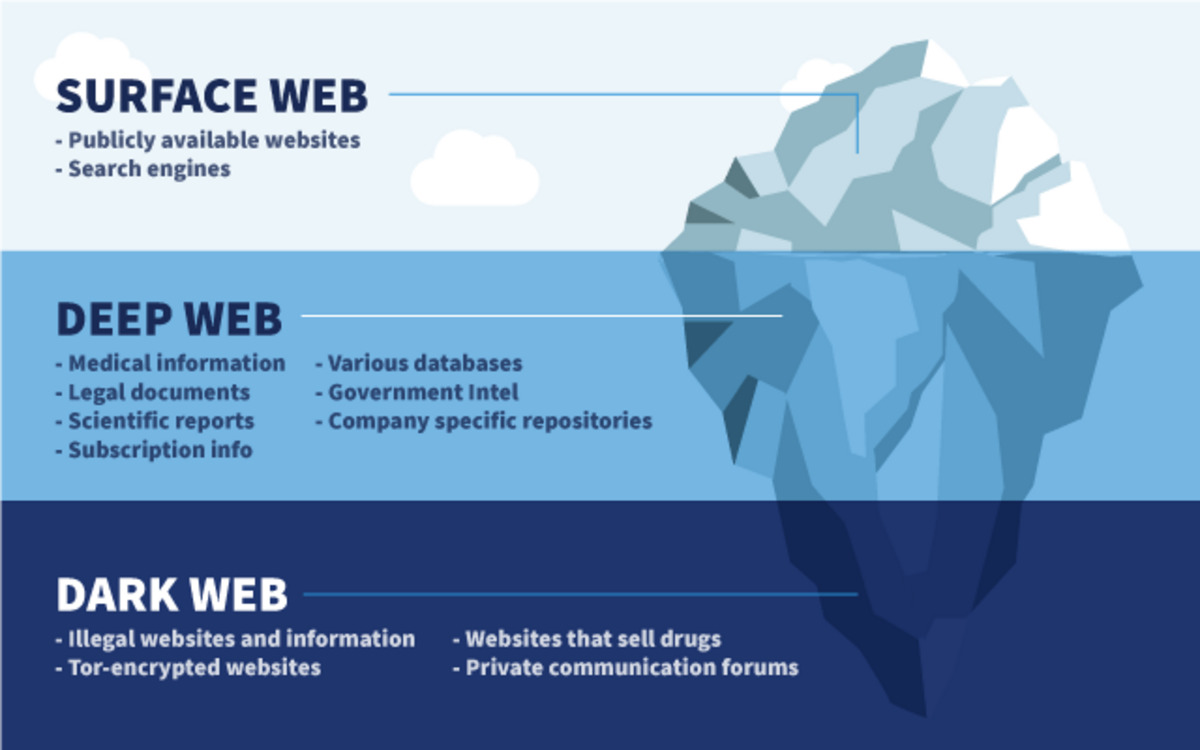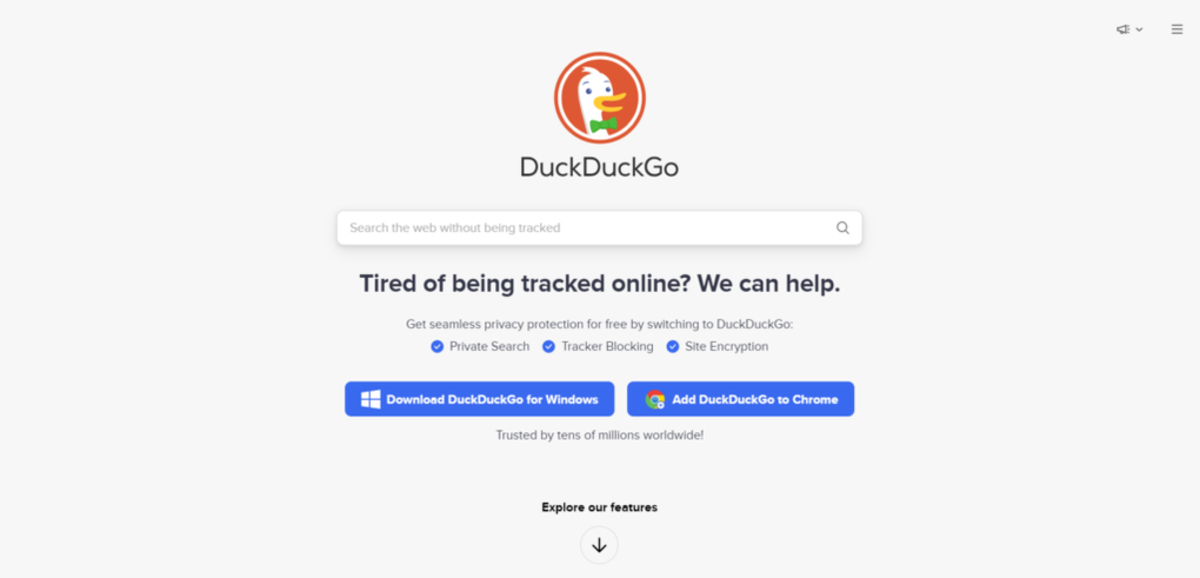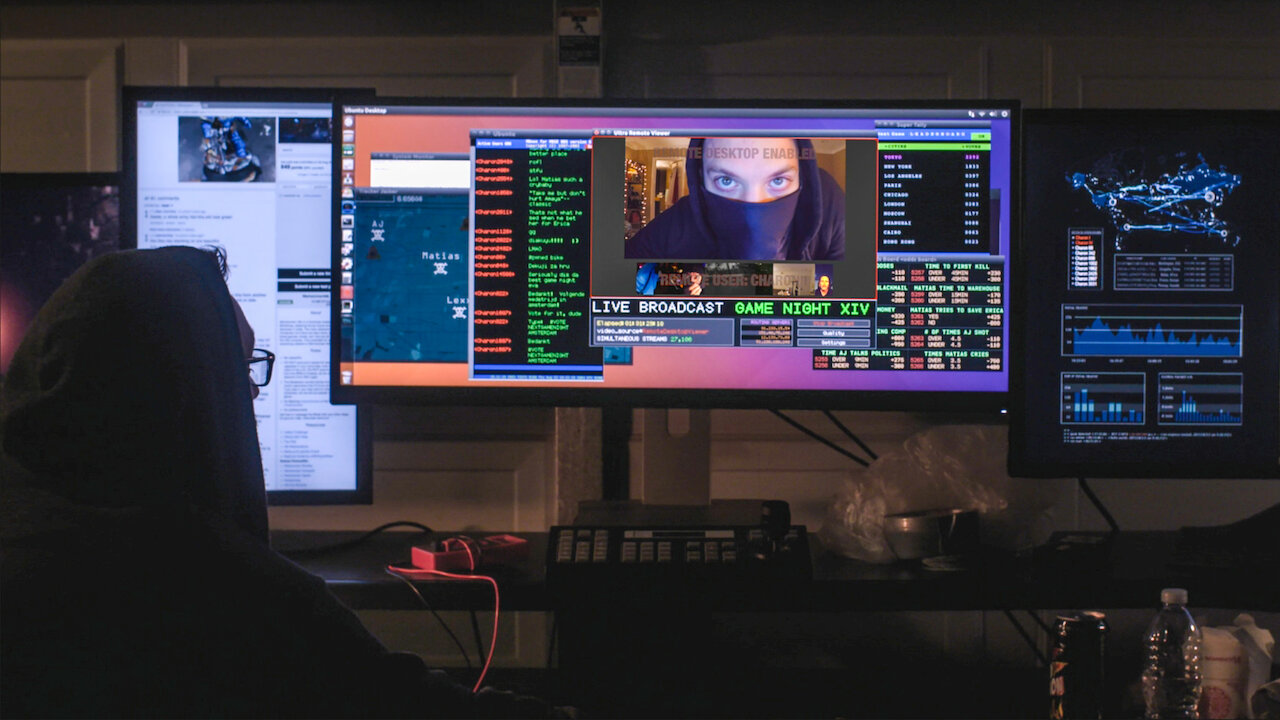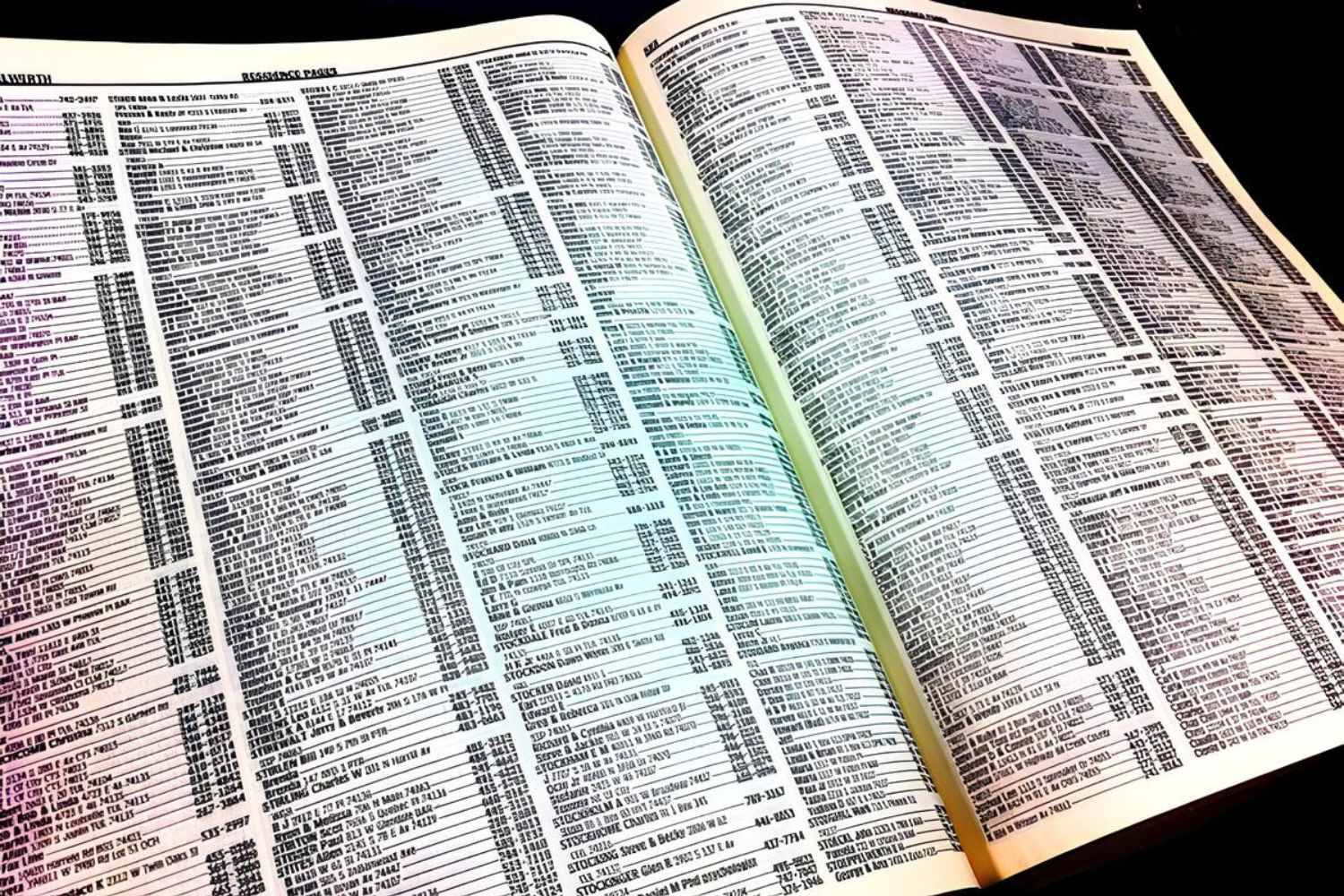Introduction
The advent of the internet has opened up a vast and diverse digital landscape where people can connect, communicate, and access information like never before. However, beyond the surface web that most of us are familiar with, there exists an intriguing and mysterious realm known as the Dark Web.
Unlike the visible and indexed web, the Dark Web operates on an overlay network that requires specific software and configurations to access. It provides a level of anonymity, making it an attractive platform for individuals seeking to engage in illicit activities, share illegal content, or protect their privacy.
Understanding the scale and scope of Dark Web usage is a challenging task. While it is difficult to obtain accurate data, estimates and research can shed light on the number of individuals who engage with this enigmatic part of the internet.
In this article, we will delve into the concept of the Dark Web, explore common activities that take place on this hidden platform, discuss the challenges of estimating Dark Web user numbers, and examine the factors that contribute to its usage.
Before we dive deeper into the topic, it is important to note that the purpose of this article is to provide an informative overview of Dark Web usage and not to endorse or promote any illegal or unethical activities.
What is the Dark Web?
The Dark Web refers to a collection of websites and online platforms that are intentionally hidden and inaccessible by traditional search engines like Google and Bing. It is a part of the internet that operates on overlay networks, such as Tor (The Onion Router), which anonymize users and their activities.
Unlike the surface web, which consists of indexed websites accessible to the general public, the Dark Web is shrouded in secrecy. It is home to numerous hidden marketplaces, forums, and communication channels that facilitate illicit and anonymous transactions.
The anonymity provided by the Dark Web is primarily achieved by encryption and routing internet traffic through a network of relays, making it difficult to trace a user’s identity or physical location. This has attracted a range of individuals, from whistleblowers and privacy advocates to criminals and hackers, seeking to operate beyond the reach of traditional surveillance and law enforcement.
Accessing the Dark Web requires specialized software, such as Tor, which encrypts and relays internet traffic through a series of volunteer-operated nodes. This encryption and relaying process makes it extremely challenging to identify the true source or destination of any communication within the network.
It is important to note that not everything on the Dark Web is illegal or malicious. While illegal activities, such as drug trafficking, weapons trading, and hacking services, do take place, there are also legitimate uses of the Dark Web. For example, journalists and activists in repressive regimes may utilize it to safeguard their communications or share sensitive information securely.
However, due to the anonymous nature of the Dark Web, it has garnered a reputation for harboring illicit activities, such as the sale of illegal drugs, stolen data, counterfeit documents, and even hiring hitmen. This has made it a subject of interest for law enforcement agencies and cybersecurity professionals seeking to combat cybercrime and protect internet users.
Understanding Dark Web usage
Dark Web usage can vary widely, and it is challenging to obtain a comprehensive understanding due to its secretive nature. However, through research and analysis, we can gain some insights into the common activities that take place on this hidden part of the internet.
One of the primary motivations for using the Dark Web is anonymity. Individuals seeking privacy or anonymity may rely on the Dark Web to protect their identity and online activities. This includes whistleblowers, journalists, and individuals living in countries with restricted internet access or surveillance.
Another significant aspect of Dark Web usage is the illicit trade in illegal goods and services. Underground marketplaces operating on the Dark Web provide an avenue for the sale and purchase of drugs, weapons, stolen data, counterfeit documents, and more. These marketplaces often use cryptocurrency as the preferred form of payment to further protect the anonymity of buyers and sellers.
In addition to illegal activities, the Dark Web is also a hub for various cybercriminal operations. Services like hacking tools, ransomware, and botnets can be acquired or rented on the Dark Web, enabling cybercriminals to launch attacks, steal personal information, or exploit vulnerabilities for financial gain.
Communication is another important aspect of Dark Web usage. Dark Web forums and chat platforms provide a venue for individuals to engage in discussions, share knowledge, and collaborate on illegal activities or cybercrime. This makes it easier for like-minded individuals to connect and plan illegal activities without fear of being monitored or tracked.
While illegal activities dominate the Dark Web landscape, it is crucial to acknowledge that not everyone using the Dark Web is engaged in nefarious behavior. Journalists, researchers, and individuals with a genuine need for privacy may utilize the Dark Web to access and distribute sensitive information without fear of censorship or reprisal.
Understanding Dark Web usage is an ongoing challenge. Law enforcement agencies and cybersecurity professionals continue to adapt their strategies to monitor and combat illicit activities on the Dark Web, while privacy advocates strive to preserve individuals’ rights to anonymity and freedom of expression.
Common activities on the Dark Web
The Dark Web serves as a platform for a wide range of activities, both legal and illegal. While it may be notorious for its association with illicit trade and underground marketplaces, there are other noteworthy activities that occur in this hidden realm.
One of the prominent activities on the Dark Web involves the trade of illegal substances. Underground marketplaces offer a wide variety of drugs, including narcotics, prescription medications, and synthetic compounds. These marketplaces operate similarly to conventional e-commerce platforms, with sellers providing detailed product listings, customer reviews, and even customer support.
Another prevalent form of commerce on the Dark Web is the sale of stolen data. Hacked databases, stolen credit card information, and personal identities are traded on various forums and marketplaces. This data is often used for identity theft, financial fraud, and even blackmail.
In addition to the trade in physical and digital goods, the Dark Web also hosts various services related to cybercrime. These services include the sale of hacking tools, malware, hacking tutorials, and even targeted attack services. Cybercriminals can find the necessary resources to carry out their illicit activities, further enabling the growth of cybercrime.
On the Dark Web, anonymity plays a crucial role in facilitating communication and collaboration among individuals involved in illegal activities. Dark Web forums and chat platforms provide a space for like-minded individuals to exchange knowledge, share techniques, and plan criminal operations without fear of detection.
Aside from illegal activities, the Dark Web is also a haven for whistleblowers and activists who seek to bypass censorship and surveillance. Journalists and individuals living under repressive regimes can use the Dark Web to share sensitive information, conduct in-depth research, and communicate securely without the fear of retribution.
It is important to note that while some activities on the Dark Web are legal and within the realm of individual privacy, a significant portion revolves around criminal endeavors. Law enforcement agencies, cybersecurity professionals, and governments worldwide have been actively engaged in monitoring and combating these illicit activities.
As technology evolves, so do the activities on the Dark Web. With the emergence of more advanced encryption methods and decentralized marketplaces, the landscape of the Dark Web continues to evolve, posing ongoing challenges for those seeking to regulate and protect users from malicious activities.
Estimating the number of Dark Web users
Determining the exact number of Dark Web users is a complex task, given the hidden and anonymous nature of this part of the internet. The decentralized and encrypted structure of the Dark Web makes it challenging to collect accurate data on user numbers. However, researchers and experts have attempted to estimate the size of the Dark Web user base through various methods.
One common approach to estimating Dark Web user numbers is by analyzing the number of downloads and installations of the Tor browser, which is the most popular software used to access the Dark Web. The Tor Project, the organization responsible for developing and maintaining the Tor software, provides periodic statistics on the number of Tor browser downloads. While these statistics do not necessarily equate to the number of active Dark Web users, they offer a rough approximation.
Another method involves monitoring the number of listings and activities on Dark Web marketplaces. Researchers can analyze the volume of goods and services being traded and infer the number of users based on these metrics. However, this method comes with limitations, as not all Dark Web activities are associated with marketplaces, and some users may engage in non-commercial activities.
Surveys and interviews with individuals with knowledge or experience of the Dark Web can provide qualitative insights into user numbers. By collecting self-reported data, researchers can gain a better understanding of the demographics and motivations of Dark Web users. However, the reliability and accuracy of self-reported data can be a challenge, as individuals may not provide truthful information due to the illegal nature of their activities.
It is worth noting that estimations of Dark Web user numbers vary greatly, ranging from several hundred thousand to several million. These estimates are further complicated by the dynamic nature of the Dark Web, with users constantly entering and exiting the platform, making it challenging to capture an accurate snapshot of the user base at any given time.
Furthermore, the Dark Web is not a homogeneous entity, and different communities and platforms may have varying degrees of overlap in terms of users. Therefore, estimating the total number of Dark Web users requires considering the multiple layers and sub-communities within this hidden part of the internet.
While quantifying the exact number of Dark Web users remains elusive, it is clear that this clandestine corner of the internet attracts a significant number of individuals with diverse motivations, ranging from privacy-seeking users to criminals engaging in illicit activities.
Challenges in determining Dark Web user numbers
Determining the exact number of Dark Web users is a complex task due to various challenges and limitations inherent in this clandestine part of the internet. While researchers and experts have made efforts to estimate user numbers, these estimates come with significant uncertainties.
One of the key challenges in determining Dark Web user numbers is the anonymous and encrypted nature of the Dark Web itself. The use of encryption tools and techniques, such as the Tor network, allows users to maintain their anonymity and obscure their activities. This makes it difficult to track and identify individual users or collect reliable data on user numbers.
Additionally, the dynamic nature of the Dark Web poses challenges for estimating user numbers. Users frequently enter and exit the platform, making it challenging to capture an accurate snapshot of the user base at any given time. The fluid nature of the Dark Web also means that user numbers can fluctuate rapidly, further complicating estimation efforts.
Another challenge is the heterogeneity of Dark Web communities and platforms. The Dark Web is not a homogeneous entity, and different communities and platforms within it may have different user bases and levels of overlap. Estimating user numbers requires considering these multiple layers and sub-communities, making it a complex task.
The lack of reliable and comprehensive data on Dark Web activities is another major obstacle. Dark Web activities are intentionally hidden and illegal in many cases, making it difficult to collect accurate data. Self-reported data from surveys and interviews may not provide reliable information, as individuals may not be truthful about their Dark Web activities due to the associated legal risks.
Furthermore, the decentralized nature of the Dark Web makes it challenging to gather comprehensive information. Unlike the indexed and centralized nature of the surface web, the Dark Web operates on overlay networks, making it difficult to access and monitor user activities. This limits the amount of data available for analysis and estimation.
Lastly, the secretive nature of the Dark Web poses challenges for conducting research and data collection. Researchers and experts face legal and ethical considerations when studying the Dark Web, as engaging with or monitoring illegal activities is against the law in many jurisdictions. These ethical constraints can hinder efforts to collect reliable data on user numbers.
In light of these challenges, estimating the exact number of Dark Web users remains a complex and uncertain endeavor. While researchers continue to develop new methodologies and techniques, the hidden and anonymous nature of the Dark Web will likely continue to present challenges in accurately determining user numbers.
Factors influencing Dark Web usage
Dark Web usage is driven by a variety of factors, reflecting the diverse motivations of individuals who choose to engage with this hidden part of the internet. Several key factors influence the decision to use the Dark Web, ranging from privacy concerns to the desire for anonymity and access to illicit goods and services.
One significant factor is the need for privacy and anonymity. The Dark Web allows individuals to engage in online activities without the fear of being monitored or tracked. This is particularly appealing for those living under repressive regimes or in countries with strict surveillance measures. Privacy-conscious individuals and whistleblowers also turn to the Dark Web to protect their identities and safely communicate sensitive information.
Another factor driving Dark Web usage is the ability to access and participate in illicit activities. The anonymity provided by the Dark Web attracts individuals involved in illegal trades, such as drug trafficking, weapons trading, stolen data, counterfeit goods, and hacking services. The Dark Web provides a platform for these activities, leveraging cryptocurrencies and encrypted communication channels to facilitate transactions.
The availability of illegal goods and services on the Dark Web serves as an enticement for many users. From drugs and weapons to hacking tools and stolen data, the Dark Web offers a marketplace for individuals seeking access to these illicit commodities. The ease of finding and purchasing such items contributes to the appeal of the Dark Web as a platform for illegal trade.
Technological factors also play a role in Dark Web usage. The development and widespread use of anonymizing software, such as the Tor network, have made accessing the Dark Web more feasible for individuals with varying technical abilities. These tools provide the necessary infrastructure to navigate the hidden layers of the internet and maintain anonymity, making Dark Web usage more accessible.
Socioeconomic factors also influence Dark Web usage. Individuals facing financial difficulties or lacking access to legitimate employment opportunities may turn to the Dark Web as a means to earn income through illicit activities. The lure of quick money and the potential for anonymity draw individuals to engage in cybercrime or trade in illegal goods and services.
Lastly, social and cultural factors can contribute to Dark Web usage. The existence of online communities and forums dedicated to illegal activities and shared interests creates a sense of belonging and fosters engagement. Individuals may be influenced by peer pressure or seek validation by participating in these communities, leading them to explore the Dark Web.
It is important to note that while the Dark Web offers anonymity and privacy, not all users engage in illegal activities. Some individuals utilize the Dark Web for legitimate purposes, such as safeguarding their online communications or accessing information that may be censored in their respective countries.
Understanding the complex interplay of these factors is crucial in comprehending the motivations behind Dark Web usage. The Dark Web is a multifaceted ecosystem shaped by a diverse range of influences, and an in-depth examination of these factors can provide insights into the motivations and behaviors of its users.
Conclusion
The Dark Web remains a mysterious and intriguing part of the internet, shrouded in anonymity and secrecy. It serves as a platform for a wide range of activities, both legal and illegal, attracting individuals with different motivations and backgrounds.
While estimating the exact number of Dark Web users is challenging due to the hidden and decentralized nature of this realm, researchers have made efforts to approximate user numbers. These estimates vary widely, reflecting the dynamic and ever-evolving nature of the Dark Web.
Understanding the Dark Web requires delving into its various aspects. From its encrypted and anonymous structure, which enables individuals to protect their privacy and engage in illicit activities, to the availability of illegal goods and services, the Dark Web presents a unique and complex landscape.
Factors such as the need for privacy, access to illicit goods and services, technological advancements, socioeconomic circumstances, and social influence play significant roles in driving Dark Web usage. These factors shape the activities and motivations of individuals within this hidden ecosystem.
It is important to note that while the Dark Web has gained notoriety for its association with illegal activities, not all users are engaged in illicit behavior. Legitimate uses of the Dark Web, such as protecting anonymity, facilitating whistleblowing, and bypassing censorship, exist alongside the darker aspects.
As technology advances and society continues to grapple with issues of privacy, cybersecurity, and internet regulation, the Dark Web will likely remain a topic of intrigue and concern. Balancing the need for privacy and online freedoms with the imperative to combat illegal activities presents ongoing challenges for governments, law enforcement agencies, and cybersecurity professionals.
While the Dark Web continues to evolve, understanding its complexities, motivations, and activities will contribute to better strategies for addressing the risks associated with its usage. By shedding light on this hidden corner of the internet, we can foster informed discussions and work towards a more secure and responsible digital future.










